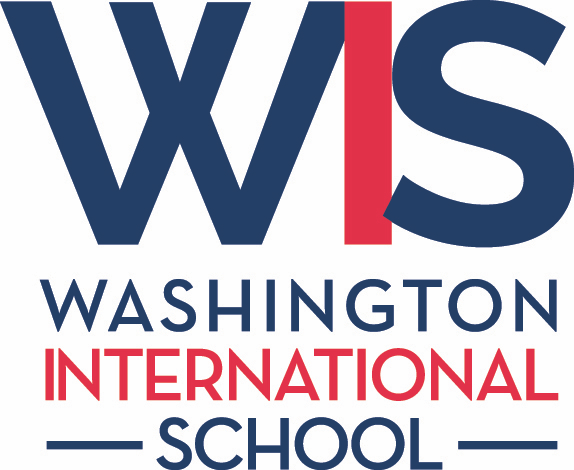Written By: Àngels Natals, WISSIT Faculty Member and Spanish Teacher at Oakton, High School in Oakton, VA
Check out additional documentation from this project in this website https://new.express.adobe.com/webpage/JzApSIaMikBg8
In July 2024 I joined nineteen other educators from across the United States in Washington DC at the Museum of Natural history. It was the start of Cohort 1 of the Smithsonian Democracy in Dialogue Virtual Exchange Program. We spent five days immersed in professional development at the Smithsonian museums, regarding Generation Z, and themes of identity, community building and belonging, civic agency and democracy.

Each one of us and our students was paired with another educator and their students to plan and engage in virtual exchanges with a common goal: to explore and discuss our roles and perspectives, and those of our communities in the American experiment in view of the 250th anniversary of our country.
My Spanish 5 students and I, at Oakton HS in Fairfax, Virginia were paired with Mr. Sheehy’s AP world History class at North Andover High School in Massachusetts.
The arrival of snail mail started our collaboration. Students exchanged letters to introduce themselves and they used the “Same, Different, Connect, Exchange” thinking routine as they read them. They found commonalities such as the clubs and organizations they belong to, their values, and the sense of belonging to their communities. Students felt connected because of our diverse populations, the value we place on education and volunteering, and our concerns for the future. One striking difference was that our North Andover partners have a ski team. Something that we all wish we had!


How can you introduce yourself to others using an object?
After our initial connections, in our first virtual exchange, students explored their own identities through the power of objects. A sleeping bag, a scarf, a plane, a camera, yogurt, soccer cleats, a glass bottle, or book earrings were some of these objects. Students shared their stories, and how all these objects connect them to other peoples’ stories, their families and ancestors, special places, events, feelings and memories. In our students’ words, our first session together was illuminating, unique, insightful, eye-opening, refreshing, and “eduintellectualcational”.


How are you connected to your community? How do you belong?
Hand mapping our communities and identifying a special element in them provided each group with a snapshot of how students see the world and the communities they live in. We explored our sense of belonging, and how our special element keeps us grounded and connected to places, people and memories. Sharing our handmaps, our second exchange discussions showed us similarities and differences regarding students’ social lives and hobbies, high school rivalries, our communities’ political leanings and our perceptions of local distinctiveness. Our second exchange revealed a common understanding that community is not only defined by geographical boundaries. Some of the student headlines for this exchange were: “Even though we live in different places, we crave community”, “Common ground found in community for teenagers” , and “How Perspectives of Community connect us.”



What element represents you as a member of Generation Z in the American experience?
During our third exchange, students shared the deep dive they took into their generational identities. The National Portrait Gallery, Snapchat, “Diary of a Wimpy Kid”, Covid-19, Starbucks, “The Hill We Climb”, Tik Tok, or sneakers are some of the material and non material elements that connect them as members of the same generation. In our final reflection, using the “Color, Symbol, Image’’ thinking routine, many students associated yellow with positive communication and ideas and green with nature. They chose symbols like a family, a circle and puzzle pieces to illustrate unity and shared experiences. Finally, images such as happy faces and technology icons reflected how connected they felt after these interactions.
Each student crafted an “I am from…” poem, in Spanish (Oakton HS) and in English (North Andover HS) elaborating on the details of all the elements they explored throughout our exchanges. The poems also included connections to cultural heritage and ancestry, students’ values and beliefs, and connections to the past, the present and the future of our country.
“I am from the bright valleys of the farm that was passed down generations
whose brown rich earth supports the world renowned Kenyan culture of coffee”
~ Andrea
“I am from celtic Park
and its crowds’ electric atmosphere,
where pride is alive, voices resonate, and the air smells like wet grass”
~ Patrick
“I am from iCome here! and “My house is your house”,
I am from Polaroid cameras, too old for Gen Z”
~ Harper
“ I am from everything that happened and everything that will happen.
However, I am myself, in the present”
~ Ben
Each student chose the most meaningful verse of their poem and we created a joint “I am from…” poem alternating verses from both classes, in Spanish and in English. By weaving together the individual verses, we created a collective voice that serves as a testament to the diversity of our communities and to the connections we formed during our virtual exchange.
As our culminating project for the Smithsonian, students created powerful videos telling their personal stories through all the elements explored and incorporating their poems.
Throughout the project, students honed essential 21st-century skills. They engaged in rigorous critical thinking as they analyzed their own identities and communities, and those of their partners. Through thoughtful dialogue and projects, they honed their communication and collaboration skills. They broadened their perspectives, gaining invaluable insights into the diverse communities and lived experiences of their peers across state lines. They developed a deeper understanding of global competence, and appreciated the richness of diverse viewpoints. Their hand maps and “I am from…” poems showcased their creativity and their skills to translate their ideas into visual and literary forms.
In our final reflection, using the “Three Whys” thinking routine we pondered:
- Why might exploring my identity in a deeper way, sharing perspectives and making connections with my community and the American experience matter to me?
- Why might it matter to my community, the people around me, my family, my friends, my school?
- Why might it matter to the world?
and made visual representations of our reflection that served as reminders of the project’s lasting impact.

This experience demonstrates that truly meaningful connections and deep learning can flourish when people communicate and discuss similarities and differences, even in a virtual environment. It was a powerful reminder that our students are not just learning about the American experiment, but actively shaping its future.



